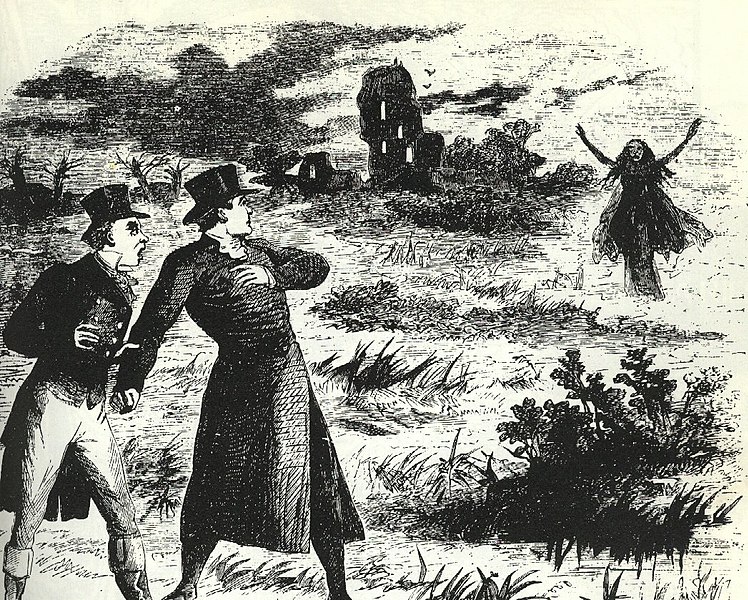One of Ireland’s most well-known folk creatures, the banshee (also known as bean sidhe or the original Irish bean sí) is a supernatural creature taking the form of a woman whose wail is said to herald death. The banshee’s often frightening appearance and close association with death means many people mistake her for a ghost or spirit, but in truth she is more closely related to Ireland’s other famous supernatural inhabitant, the leprechaun. The name banshee translates loosely as ‘fairy woman’, and they are generally described as a member of the fey, preternatural spirits common throughout European folklore. A more accurate translation is ‘woman of the fairy mound’, linking them to the burial mounds, or tumulus, found in a number of locations in Ireland that may date back as far as neolithic times.
Banshees are variously described as singing, wailing or keening to announce the death of the member of a prominent Irish family. Keening is a traditional aspect of the Irish wake dating back to the 16th Century, involving female mourners singing a lament for the dead. The most talented keeners were highly sought after across Ireland.

This has given rise to the common description of banshees as the wailing woman, said to sing a mournful song to announce the death of a person, even if they have died far away or overseas. The sound of a banshee would sometimes be the first indication to loved ones that a person had died. The banshee was also known to predict impending tragedy, even at times warning people of upcoming danger that is likely to result in their death.
The description of a banshee varies significantly, although she is invariably described as female. Some are said to be beautiful women dressed in long grey or white dresses, often with long, flowing white or red hair and eyes reddened from crying. Others are likened to crones, short and hunched, often concealing their face with a black veil. While some are said to be the height of a human or even taller, most are significantly shorter, usually under four foot, further lending support to the suggestion that they are one of the ‘little folk’, meaning fairies.
Older stories of banshees suggest that they are attached only to five prominent Irish families; the O’Connors, O’Neills, O’Gradys, O’Briens and Kavanaghs. However, this is widely disputed, with others suggesting that all Irish families have a banshee, or that all those possessing Goidelic surnames, meaning their families that date back to original Celtic inhabitants of Ireland, rather than later Norman, Norse or English settlers. These surnames generally carry the prefix O’ or Mac/Mc, and include this writer’s own.
Despite sometimes possessing a fearsome appearance and generally being the herald of bad news, banshees are usually not considered malevolent. Aside from their screams or singing, other encounters with banshees are limited to knocking on walls or windows. When not mourning the death of a specific family member, banshees are said to sit and weep for the general misfortune in the world, with a number of chair-shaped rocks across Ireland being referred to as banshee’s chairs.
